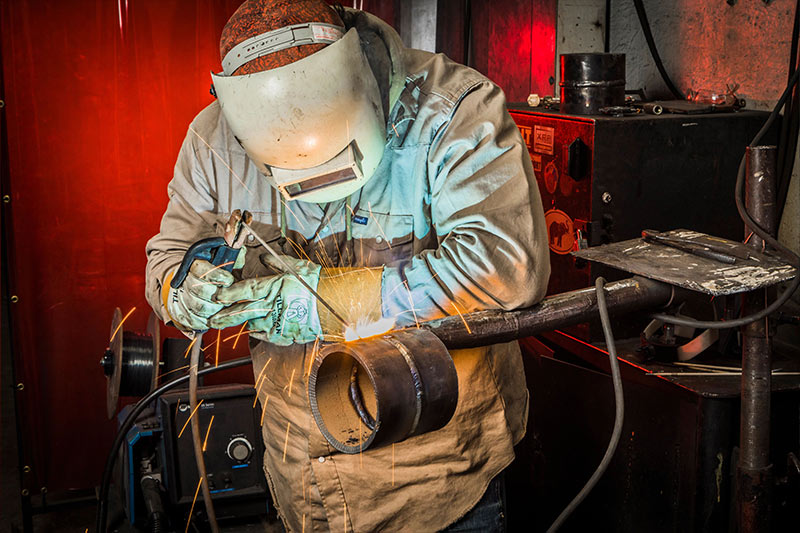RSI is a Great Training Option for Everyone
Learn more about how we can prepare you to advance your career.
Did you know that you don’t need formal experience to attend a Welding program? Are you ready to become a welder and want to learn more about the curriculum and how much time is spent in the program? In this article, we will review the classes included in the Welding program at The Refrigeration School (RSI) and how long it takes to learn welding.
What Do You Learn During a Welding Program?
You complete many essential classes in the Welding program at RSI. In addition to lectures, you get hands-on experience in real-world scenarios. Plus, RSI offers virtual reality training with OcuWeld. OcuWeld is a new and innovative Virtual Reality (VR) welding simulator designed by expert welding instructors for our students. The classes that are part of the welding program include:
Welding Fundamentals – this class focuses on welding and safety fundamentals. You learn about safety awareness, the basic layout of construction drawings, how to interpret welding symbols, thermal torch techniques, plasma cutting and carbon arc gouging procedures, arc welding processes, and the various types of electrodes used with arc welding. Project assignments allow students to practice and develop welding and cutting skills.
GMAW/FCAW Processes – GMAW (MIG) uses torches to shield gas and automatic wire feed systems. FCAW (Fluxcore) torches use a powered flux to shield the weld. You will learn how to set up and operate GMAW/FCAW welding equipment, processes for welding plates in various positions, preparing pipe for GMA/FCAW welding, and knowledge about construction drawings.
Structural Welding – develops your flat welding techniques in three basic positions. SMAW processes perform basic butt welds using mild steel. You learn about welding electrodes, fundamental procedures to root pass and fill welds, welding diagrams and drawings used to communicate lab project information, basic destructive welding testing techniques, and metallurgy principles.
Get Started on the Path to a New Career
Fill out our form to learn how we can help you change your life.
Pipe Welding – you expand your knowledge and skills to perform basic pipe welding techniques (SMAW & GTAW). GTAW introduces you to basic root welds on pipe coupons. SMAW allows you to complete fill and cap welds. You will also learn how to read and interpret basic pipe drawings, cutting pipe coupons, beveling pipe using thermal and mechanical beveling processes, and welding in multiple positions.
Advanced Pipe Welding – you learn to weld mild steel pipe and high carbon steel with stainless steel electrodes. You also learn how to rig and balance pipe loads, use hand signals for communication, and lift and place pipe for welding operations.
Welding Capstone – a transitional course from the classroom to the field. You will complete a series of exercises that reinforce classroom lectures, improve skills, and practice production rates.
How Many Years Does It Take to Learn Welding?
Did you know you can complete the Welding program at RSI in as little as seven months? Quicker than a 2- or 4-year college, you can start working as a welding apprentice in a few short months. RSI offers small class sizes, so you get personal attention from instructors and flexible scheduling with morning, afternoon, and evening classes. Our instructors are experienced professionals who teach welding from firsthand experience. During this program, you use industry-standard equipment, so you become confident using welding machines, plasma and track cutters, and bench grinders.
Want To Learn More?
The welding certification path starts with enrolling in RSI’s Welding Specialist program. We offer hands-on training with classroom lectures to prepare you for entry-level structural, alloy, and pipeline welding job opportunities. To learn more, contact us.
Additional Sources




